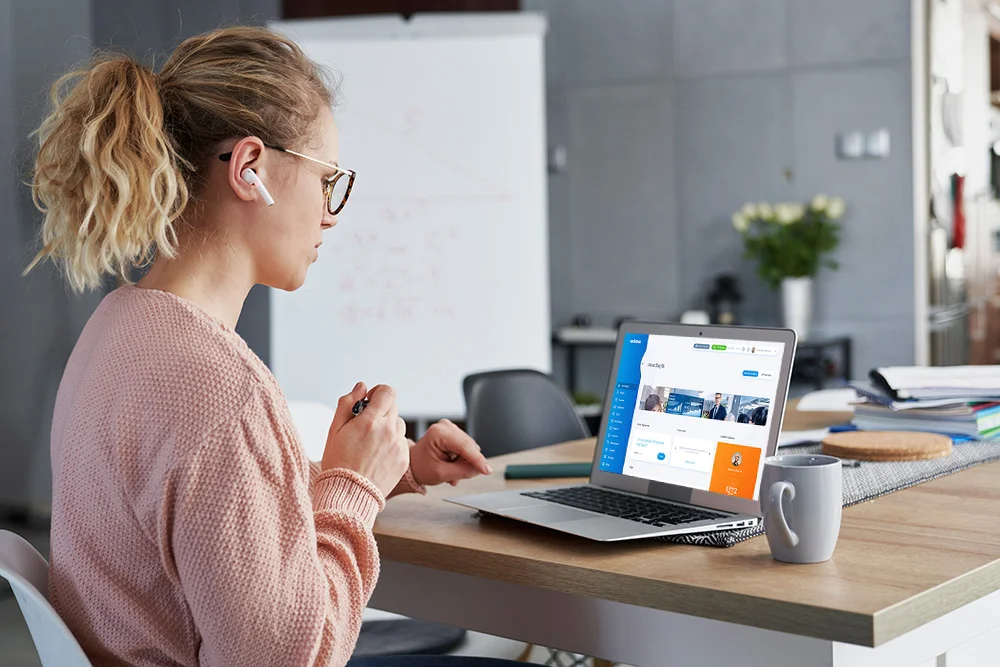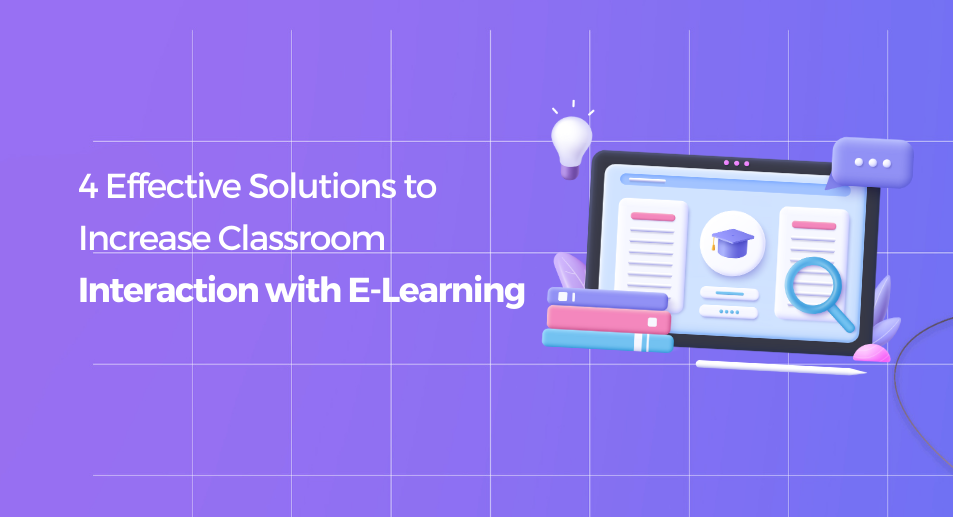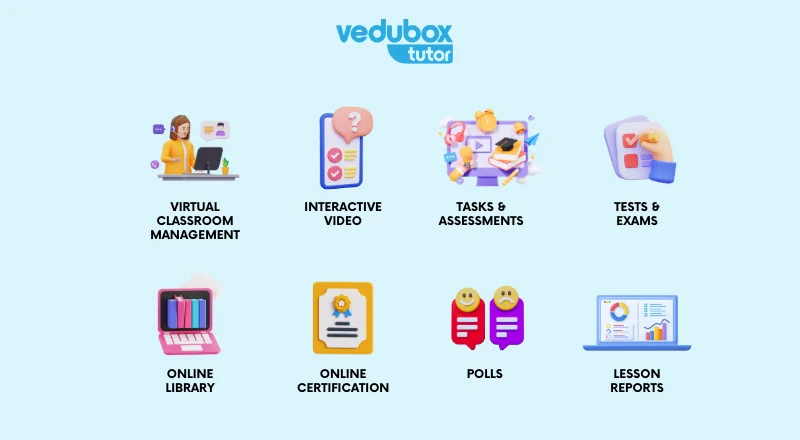4 Effective Solutions to Increase Classroom Interaction with E-Learning
In today’s educational landscape, rapid technological advances are leading to significant changes. Educational institutions are embracing a variety of learning models, from traditional classroom instruction to distance learning. E-learning, a cornerstone of this change, provides students with access to teaching materials and the ability to interact with their teachers via online platforms. Improving classroom interaction through e-learning is critical to making student learning more effective.
In this blog post, we look at how you can improve classroom interaction with e-learning and integrate alternative methods into your lesson plans as an e-learning teacher.

Create interactive lesson plans!
To improve classroom interaction through e-learning, you need to make your course material interactive. Use educational technologies and learning management systems to develop interactive content, student interactions, assignments and quizzes instead of traditional lectures. Encourage student engagement by asking thought-provoking questions and designing scenarios that encourage classroom interaction.
In maths lessons, for example, you can ask students to solve complex problems and share their solutions on online platforms. This encourages collaborative thinking and interaction among students.
Organise virtual classroom meetings!
Regular virtual meetings or video conferences are important to improve classroom interaction with e-learning. These sessions offer students the opportunity to come together in real time and interact with their teacher and classmates. By asking questions, stimulating discussion, addressing technical issues and listening to their opinions during live sessions, you can encourage interaction.
The breakout rooms in video conferencing tools like Zoom can greatly enhance the virtual classroom experience. By organising students into groups and then using Zoom’s breakout rooms for discussions, you can create a stimulating virtual learning environment.
Use forums and discussion boards!
E-learning platforms facilitate interaction through forums and discussion boards. These tools allow students to share their thoughts on a topic, ask questions and evaluate the views of other students. Expressing their views and understanding the perspectives of others enriches their learning experience.
Give your students feedback and monitor their progress!
Monitoring your students’ progress and giving them feedback is a crucial factor for more interaction. Providing clear and constructive feedback on assignments and projects via e-learning platforms helps students understand and improve their learning processes. Listening to their questions and concerns and responding promptly will increase their engagement in learning.
Before we conclude our blog post, let’s not forget to mention the advanced features of Vedubox Tutor that can enhance your e-learning experience in the classroom.
What is Vedubox Tutor?
Vedubox Tutor is an effective tool for managing virtual classes and improving classroom interaction. This platform allows you to interactively communicate with your students, share learning content and easily track their progress. You can find more information about the advanced features of Vedubox Tutor here.
Virtual Classroom Management:
Vedubox Tutor makes it easy to manage your virtual classroom and set up live lessons. Quickly integrate video conferencing systems (such as Zoom, Google Meet, Microsoft Teams, etc.) into the system to start your live lessons and set up your virtual classroom.
Interactive Content:
Add interactive videos, audio files, quizzes, SCORM files, documents and various other types of content to your lessons so that your students can better understand the learning material from different perspectives.
Online Tests and Exams:
In any curriculum, tests and exams are important to measure learning success. With Vedubox Tutor, you can prepare either traditional tests or multiple-choice tests.
Assignments and Tasks:
You can assign daily or weekly tasks to your students via the system and analyse the results in detail.
Online Certification:
Certificates of achievement motivate every student to learn. You can create online certificates at the end of your courses to celebrate your students’ learning achievements.
To summarise, improving classroom interaction through e-learning encourages student engagement and facilitates learning. If you are an active e-learning teacher, you can increase student engagement in online courses and support their learning process. Remember that interaction is a cornerstone of learning, and these four important steps will help you make your e-learning classroom more engaging.
In addition, advanced solutions such as Vedubox Tutor offer the opportunity to make the virtual classroom as effective as possible and ensure that students learn successfully in this digital transformation of the educational world.



